 Wedging its foot firmly into the territory currently ruled by rival application World Mate, Fizz Traveller for Pocket PC is a mobile travel companion, compatible with Windows Mobile 2003/2005 and Smartphone editions.
Wedging its foot firmly into the territory currently ruled by rival application World Mate, Fizz Traveller for Pocket PC is a mobile travel companion, compatible with Windows Mobile 2003/2005 and Smartphone editions.
As befits its travel aspirations, the program comes stuffed with information useful to globe trotting types, offering world time, international weather information with forecasts, alarms, to-do lists, Internet-updated currency conversions and more.
Loading up the application on our i-mate JAM, we were taken to a large clock with some daft confetti stuff stuck all over it that promptly sent us looking for the ‘how we did get rid of this’ option.
A rummage through the menus revealed that the developers were pretty keen on the eye candy, with customisation options letting users fiddle about with various themes, background images, clock styles and colours.
 Great if you like that kind of thing, of course, but we’d be happier with just one clean, crisp and professional interface than a load of bubbly, baubly spinning things.
Great if you like that kind of thing, of course, but we’d be happier with just one clean, crisp and professional interface than a load of bubbly, baubly spinning things.
We found the overall interface a bit of a pain too, with an animated menu system needlessly complicating matters, although we were impressed with the information that could be (eventually) displayed.
On a more positive note, the Today plug-in that ships with Fizz Traveller was a well designed addition that could be configured to show the current date/time and weather information, and cycle through other modes.
Talk about the weather
The program comes with 58,000 pre-programmed world wide cities, with the option to display more detailed time and weather for six user-selected ‘Favourite Cities,’ along with a pretty little map.
 Sadly, you couldn’t zoom into the map so it wasn’t the greatest of travel aids.
Sadly, you couldn’t zoom into the map so it wasn’t the greatest of travel aids.
The weather information was, however, impressively comprehensive, offering min/max temperatures, precipitation, forecast maps, satellite maps and 2/7 day forecasts, as well as an “Airport Delays” option which didn’t seem to be particularly useful.
More useful was the currency conversion section which, like the weather forecasts, could be configured to update wirelessly at preset intervals.
Wrapping up the feature set was a mixed bag of conversion tools for temperature, length, weight, area, volume, speed, power and torque.
We can’t recall the last time we found ourselves needing a program to convert horsepower into Kilowatts when we were on out travels, but we’ve certainly got one now.
Conclusion
There’s a lot to like about Fizz Traveller, with the program offering lots of useful, travel-related functionality and a well executed Today plug in.
 We liked the weather maps and there’s no denying that the interface has been buffed and polished up to a very high standard with lots of options for folks who like to customise their app.
We liked the weather maps and there’s no denying that the interface has been buffed and polished up to a very high standard with lots of options for folks who like to customise their app.
The only problem was that in their quest to produce the prettiest travel application around, usability occasionally flew out of the window.
Compared to its chief competitor, WorldMate 2006, the program often felt clunky and slow, and at times we found the pop up navigation system downright annoying.
It’s not all bad news for the Fizz crew though, as the program offers similar levels of functionality to their rival but retails for substantially less ($20 against WorldMate’s $35), so we’re sure some will be prepared to put up with the quirks of the interface to save themselves a few bob.
Features: 80%
Ease of use: 60%
Value For Money: 75%
Overall: 69%
Fizz Traveller 2.3 for Pocket PC
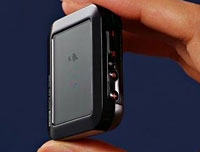 When it comes to convergence, we’re always on the look out for shiny new smartypants devices, even if we’re not always totally convinced about their usefulness.
When it comes to convergence, we’re always on the look out for shiny new smartypants devices, even if we’re not always totally convinced about their usefulness. Of course, the idea of a converged MP3 player/VoIP device isn’t a new one – in fact, we wrote about a very similar device, the Ezmax EZMP4200P VoIP MP3 Player, way back in March 2005.
Of course, the idea of a converged MP3 player/VoIP device isn’t a new one – in fact, we wrote about a very similar device, the Ezmax EZMP4200P VoIP MP3 Player, way back in March 2005.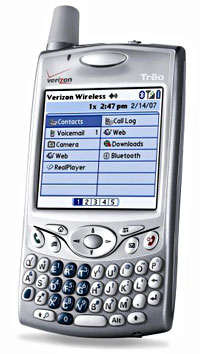 For a self confessed, gimme-gimme-shiny-new gadgets nutcase like me to be using a phone several years old speaks volumes of the strengths of the Treo 650.
For a self confessed, gimme-gimme-shiny-new gadgets nutcase like me to be using a phone several years old speaks volumes of the strengths of the Treo 650. If I’d have taken my Windows Mobile phone I dare say I would have been very well acquainted with stylus (and the reset button) by this time, but the Treo’s fabulous one-handed operation and rock solid performance made it a practical laptop replacement.
If I’d have taken my Windows Mobile phone I dare say I would have been very well acquainted with stylus (and the reset button) by this time, but the Treo’s fabulous one-handed operation and rock solid performance made it a practical laptop replacement.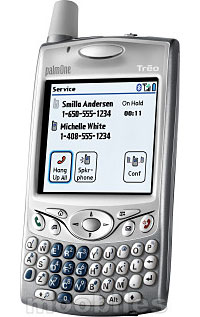 Palm has remained tight-lipped about their European product roadmap, with the web rife with rumours of both Windows and Palm new models going under ggroovy codenames like Hollywood, Lowrider, Nitro and Lennon.
Palm has remained tight-lipped about their European product roadmap, with the web rife with rumours of both Windows and Palm new models going under ggroovy codenames like Hollywood, Lowrider, Nitro and Lennon. We can always rely on Brando to come up with quirky, bizarre and sometimes near-scary products, so we thought we’d take a look at their latest range of USB speakers.
We can always rely on Brando to come up with quirky, bizarre and sometimes near-scary products, so we thought we’d take a look at their latest range of USB speakers. Mouse speakers
Mouse speakers Where did you get those ears from?
Where did you get those ears from?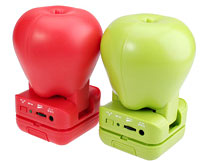 Apple sounds
Apple sounds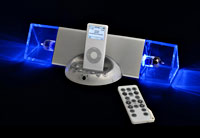 Prestige-hunting iPod owners keen to get one up on their mates need look no further than this rather remarkable iBlueTube valve amplifier, available from Japanese tech company, Thanko.
Prestige-hunting iPod owners keen to get one up on their mates need look no further than this rather remarkable iBlueTube valve amplifier, available from Japanese tech company, Thanko.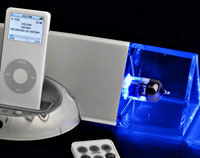 The iPod docks in the centre of the mains powered unit, with the power being supplied via a disappointimgly dull looking, hefty black external power block.
The iPod docks in the centre of the mains powered unit, with the power being supplied via a disappointimgly dull looking, hefty black external power block.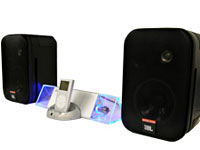 The 295×130×68mm valve amp pumps out a modest 2 x 12W output, with a frequency range of 20Hz – 30Khz (+0dB -3dB), and a claimed 80dB signal-to-noise ratio.
The 295×130×68mm valve amp pumps out a modest 2 x 12W output, with a frequency range of 20Hz – 30Khz (+0dB -3dB), and a claimed 80dB signal-to-noise ratio.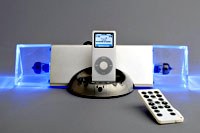 As many a beard stroking hi-fi hugger will tell you, you’ll only get real hi-fi when you’re using the best source components available, and we certainly wouldn’t put an iPod up there with Linn Sondek turntables and Cyrus CD players.
As many a beard stroking hi-fi hugger will tell you, you’ll only get real hi-fi when you’re using the best source components available, and we certainly wouldn’t put an iPod up there with Linn Sondek turntables and Cyrus CD players.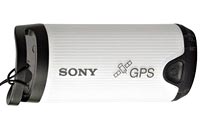 Sony Electronics have announced a groovy new GPS device that lets you add time and location information to pictures and movies captured with their digital still cameras or camcorders.
Sony Electronics have announced a groovy new GPS device that lets you add time and location information to pictures and movies captured with their digital still cameras or camcorders. Armed with this info, users can fire up the new Picture Motion Browser software that comes with the latest Sony cameras and camcorders, and see their photo locations as push pins on an online mapping website, powered by Google Maps (we’ve no idea if this software will also be made available to non Sony users.)
Armed with this info, users can fire up the new Picture Motion Browser software that comes with the latest Sony cameras and camcorders, and see their photo locations as push pins on an online mapping website, powered by Google Maps (we’ve no idea if this software will also be made available to non Sony users.)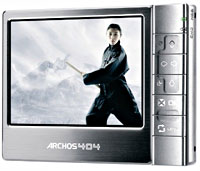 Details are still a little murky on this one, but some information on the upcoming range 404, 504, and 604 PMP devices are bubbling on up on t’internet.
Details are still a little murky on this one, but some information on the upcoming range 404, 504, and 604 PMP devices are bubbling on up on t’internet. Accessories ahoy
Accessories ahoy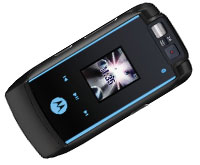 Somewhat earlier than expected, Motorola has officially announced the follow up to their wildly successful V3x phone, the new MotoRAZR MAXX.
Somewhat earlier than expected, Motorola has officially announced the follow up to their wildly successful V3x phone, the new MotoRAZR MAXX. Motorola claim that the phone can reach download speeds as fast as 3.6MB per second using the High-Speed Downlink Packet Access (HSDPA) handsets.
Motorola claim that the phone can reach download speeds as fast as 3.6MB per second using the High-Speed Downlink Packet Access (HSDPA) handsets.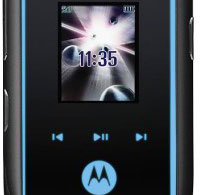 Moto has wedged in VGA and 2.0 megapixel cameras for two-way video calling, with Bluetooth 2.0+ Enhanced Data Rate, 50MB of internal storage and a microSD slot (up to 2GB) for storing tunes, videos and data.
Moto has wedged in VGA and 2.0 megapixel cameras for two-way video calling, with Bluetooth 2.0+ Enhanced Data Rate, 50MB of internal storage and a microSD slot (up to 2GB) for storing tunes, videos and data.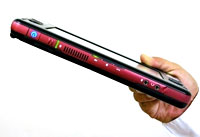 Korean technology company Daewoo Lucoms, have unveiled their new ultra mobile PC Solo M1.
Korean technology company Daewoo Lucoms, have unveiled their new ultra mobile PC Solo M1.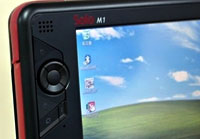 The Solo M1 features a variety of multimedia features, including video and music playback via Windows Media player, a DMB tuner, a 1.3 MP webcam for video conferencing and a 4-in-1 (MMC/ SDIO/ MS/ MS Pro) memory card reader.
The Solo M1 features a variety of multimedia features, including video and music playback via Windows Media player, a DMB tuner, a 1.3 MP webcam for video conferencing and a 4-in-1 (MMC/ SDIO/ MS/ MS Pro) memory card reader.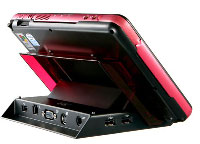 There’s also a range of optional accessories available, including a leather case, mini keyboard and external optical drive.
There’s also a range of optional accessories available, including a leather case, mini keyboard and external optical drive.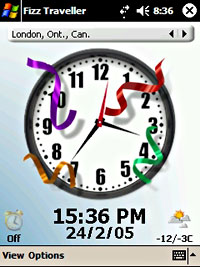 Wedging its foot firmly into the territory currently ruled by rival application World Mate, Fizz Traveller for Pocket PC is a mobile travel companion, compatible with Windows Mobile 2003/2005 and Smartphone editions.
Wedging its foot firmly into the territory currently ruled by rival application World Mate, Fizz Traveller for Pocket PC is a mobile travel companion, compatible with Windows Mobile 2003/2005 and Smartphone editions. Great if you like that kind of thing, of course, but we’d be happier with just one clean, crisp and professional interface than a load of bubbly, baubly spinning things.
Great if you like that kind of thing, of course, but we’d be happier with just one clean, crisp and professional interface than a load of bubbly, baubly spinning things. Sadly, you couldn’t zoom into the map so it wasn’t the greatest of travel aids.
Sadly, you couldn’t zoom into the map so it wasn’t the greatest of travel aids.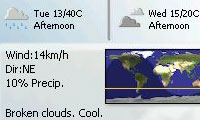 We liked the weather maps and there’s no denying that the interface has been buffed and polished up to a very high standard with lots of options for folks who like to customise their app.
We liked the weather maps and there’s no denying that the interface has been buffed and polished up to a very high standard with lots of options for folks who like to customise their app.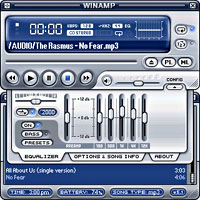 Here’s the third in Mike’s three part review of why the Palm Treo rocks his boat.
Here’s the third in Mike’s three part review of why the Palm Treo rocks his boat. Word!
Word!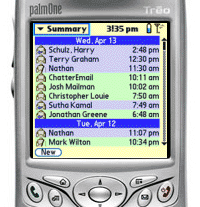 It’s the same story with SMS, with the built in text messaging interface on the Palm remaining streets ahead of its Pocket PC rivals, with the superb auto-threading conversations making it easy to keep track of text conversations. It really is a delight to use.
It’s the same story with SMS, with the built in text messaging interface on the Palm remaining streets ahead of its Pocket PC rivals, with the superb auto-threading conversations making it easy to keep track of text conversations. It really is a delight to use.